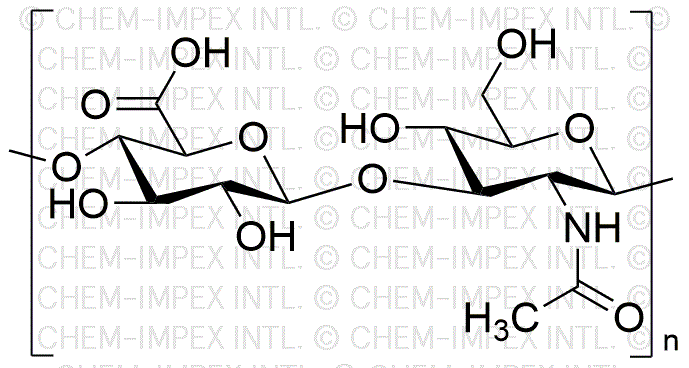Hyaluronic acid from bacteria is widely utilized in research focused on:
- Cosmetic Applications: This compound is a key ingredient in skincare products due to its exceptional moisture-retaining properties, making it ideal for hydrating creams and serums that improve skin elasticity and reduce the appearance of fine lines.
- Medical Uses: It is extensively used in ophthalmology for eye surgeries and treatments, such as cataract surgery and dry eye syndrome, providing lubrication and promoting healing in ocular tissues.
- Joint Health: In orthopedics, hyaluronic acid is injected into joints to alleviate pain and improve mobility in conditions like osteoarthritis, offering a non-surgical option for patients seeking relief.
- Drug Delivery Systems: Researchers are exploring its potential in drug delivery, where it can enhance the bioavailability of therapeutic agents, particularly in targeted therapies for cancer and other diseases.
- Tissue Engineering: It serves as a scaffold material in regenerative medicine, promoting cell growth and tissue repair, which is crucial in developing treatments for injuries and degenerative diseases.
General Information
Properties
Safety and Regulations
Applications
Hyaluronic acid from bacteria is widely utilized in research focused on:
- Cosmetic Applications: This compound is a key ingredient in skincare products due to its exceptional moisture-retaining properties, making it ideal for hydrating creams and serums that improve skin elasticity and reduce the appearance of fine lines.
- Medical Uses: It is extensively used in ophthalmology for eye surgeries and treatments, such as cataract surgery and dry eye syndrome, providing lubrication and promoting healing in ocular tissues.
- Joint Health: In orthopedics, hyaluronic acid is injected into joints to alleviate pain and improve mobility in conditions like osteoarthritis, offering a non-surgical option for patients seeking relief.
- Drug Delivery Systems: Researchers are exploring its potential in drug delivery, where it can enhance the bioavailability of therapeutic agents, particularly in targeted therapies for cancer and other diseases.
- Tissue Engineering: It serves as a scaffold material in regenerative medicine, promoting cell growth and tissue repair, which is crucial in developing treatments for injuries and degenerative diseases.
Documents
Safety Data Sheets (SDS)
The SDS provides comprehensive safety information on handling, storage, and disposal of the product.
Product Specification (PS)
The PS provides a comprehensive breakdown of the product’s properties, including chemical composition, physical state, purity, and storage requirements. It also details acceptable quality ranges and the product's intended applications.
Certificates of Analysis (COA)
Search for Certificates of Analysis (COA) by entering the products Lot Number. Lot and Batch Numbers can be found on a product’s label following the words ‘Lot’ or ‘Batch’.
*Catalog Number
*Lot Number
Certificates Of Origin (COO)
This COO confirms the country where the product was manufactured, and also details the materials and components used in it and whether it is derived from natural, synthetic, or other specific sources. This certificate may be required for customs, trade, and regulatory compliance.
*Catalog Number
*Lot Number
Safety Data Sheets (SDS)
The SDS provides comprehensive safety information on handling, storage, and disposal of the product.
DownloadProduct Specification (PS)
The PS provides a comprehensive breakdown of the product’s properties, including chemical composition, physical state, purity, and storage requirements. It also details acceptable quality ranges and the product's intended applications.
DownloadCertificates of Analysis (COA)
Search for Certificates of Analysis (COA) by entering the products Lot Number. Lot and Batch Numbers can be found on a product’s label following the words ‘Lot’ or ‘Batch’.
*Catalog Number
*Lot Number
Certificates Of Origin (COO)
This COO confirms the country where the product was manufactured, and also details the materials and components used in it and whether it is derived from natural, synthetic, or other specific sources. This certificate may be required for customs, trade, and regulatory compliance.


